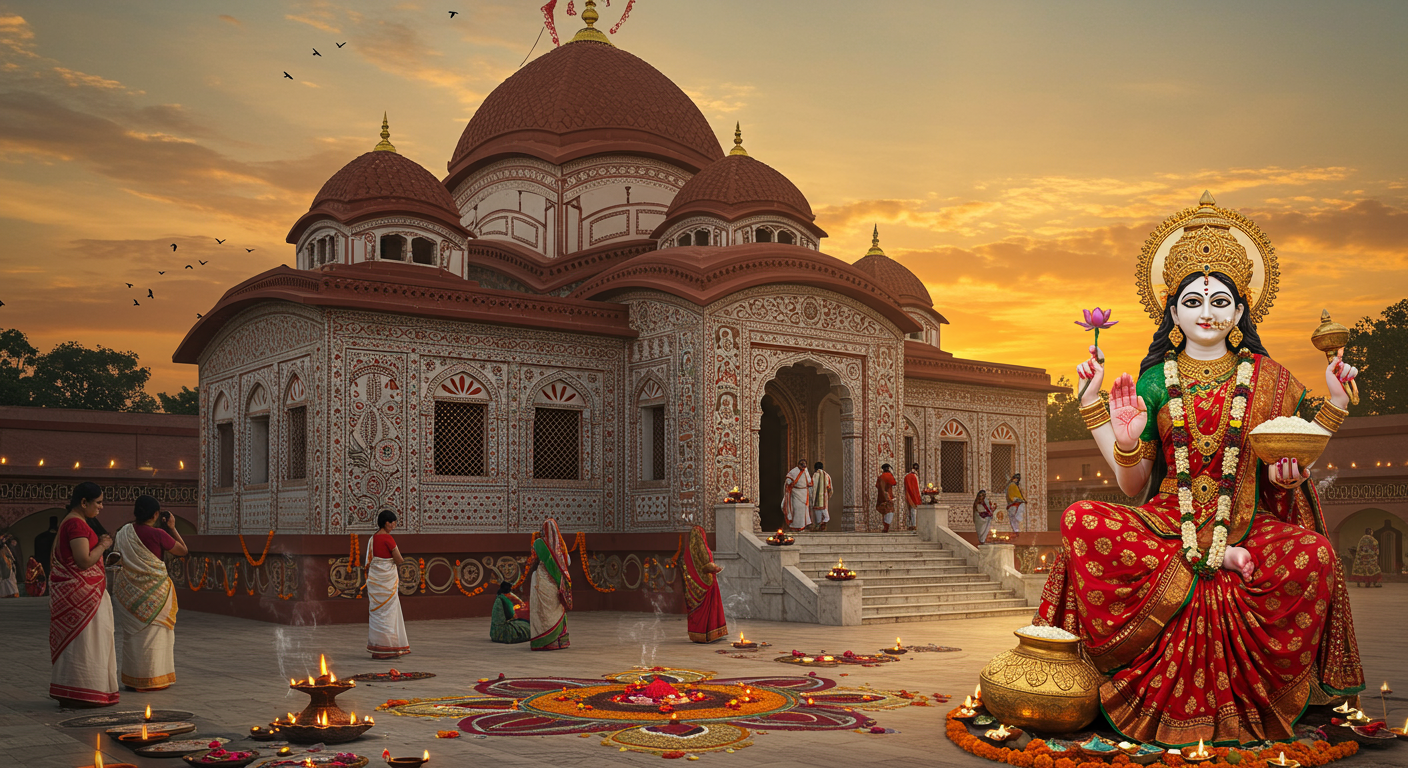
Embark on a spiritual journey to the Annapurna Temple, a revered navaratna (nine-pinnacled) temple located on the banks of the Ganges at Rasmani Ghat in Barrackpore, North 24 Parganas. Inaugurated on April 12, 1875, by Sri Ramakrishna Paramahansa, this sacred site, built by Jagadamba Devi (Rani Rashmoni’s youngest daughter), holds immense cultural and historical significance. This guide delves into the temple’s rich history, the significance of Goddess Annapurna, the rituals performed, and essential visiting tips for a fulfilling experience.
History and Significance
The Annapurna Temple, similar in design to the Dakshineswar Kali Temple, houses idols of Lord Shiva (made of silver) and Maa Annapurna, the goddess of nourishment and abundance. Originally built in 1875, the temple has served as a beacon of faith and a center for cultural activities for over a century. Its intricate architecture and serene location make it a place of profound spiritual importance for devotees seeking blessings for prosperity and well-being. The temple has played a vital role in the community, fostering a sense of unity and providing spiritual solace to countless visitors.
Rituals and Practices at Annapurna Temple
Daily rituals at the Annapurna Temple include the Mangala Aarti (morning) and Sandhya Aarti (evening). Special ceremonies and pujas are conducted during festivals like Navratri, Durga Puja, and Annapurna Puja. Offerings of bhog (food) to the deity are a significant part of the worship, and the distribution of prasad symbolizes shared blessings. The temple’s schedule includes regular darshan (viewing of the deity) and puja services, enhanced by devotional songs and chants.
Visiting Tips for Annapurna Temple
To make the most of your visit, plan your trip during non-peak hours to avoid large crowds. The temple is easily accessible by various modes of transportation. Dress modestly out of respect for the temple’s sanctity. Amenities such as parking, restrooms, and eateries are available nearby. For an extended stay, consider local accommodations. Participate in the rituals, offer prayers, and receive blessings. Remember to follow safety precautions and any health guidelines in place.
Poojn.in: Enhancing Your Spiritual Journey
Prepare for your visit to the Annapurna Temple with poojn.in, India’s leading online store for puja samagri and cultural goods. We offer a wide selection of items to enhance your worship experience:
- Brass Diyas and Lamps: Illuminate your home altar with beautifully crafted brass diyas, perfect for aarti and creating a sacred ambiance. These traditional lamps add a touch of authenticity to your prayers.
- Alta Pata: Enhance your puja rituals with alta pata, a traditional red dye used for auspicious occasions and adding a touch of tradition to your worship.
- Holy Asanas: Create a dedicated space for prayer with comfortable and sacred asanas (prayer mats). These asanas provide a clean and respectful space for your daily rituals.
Poojn.in offers a diverse range of products to suit your spiritual needs. Explore our collection and prepare for a blessed visit to the Annapurna Temple.
Cultural Impact and Community Involvement
The Annapurna Temple is deeply intertwined with the local community. It supports various arts and crafts, preserving cultural heritage through intricate decorations and festive displays. The temple organizes community programs, including food distribution drives and educational initiatives for underprivileged children. Regular events and festivals keep traditions alive, fostering unity and devotion among residents. The temple also collaborates with local authorities to promote cultural tourism, contributing to the economic growth of the region. Its commitment to environmental conservation is evident in the beautifully maintained gardens and promotion of eco-friendly practices.
Conclusion
The Annapurna Temple stands as a testament to cultural heritage, community service, and spiritual devotion. It’s a place where history, faith, and community converge, offering a unique and enriching experience for all who visit. Plan your visit and immerse yourself in the divine atmosphere of this sacred landmark.
For further exploration of related topics, visit our informative blog posts:
- Durga Puja: A Guide to Rituals, Significance, and Celebrations
- Navratri: The Nine Nights of Goddess Worship
- Essential Puja Samagri: A Guide for Your Home Mandir


